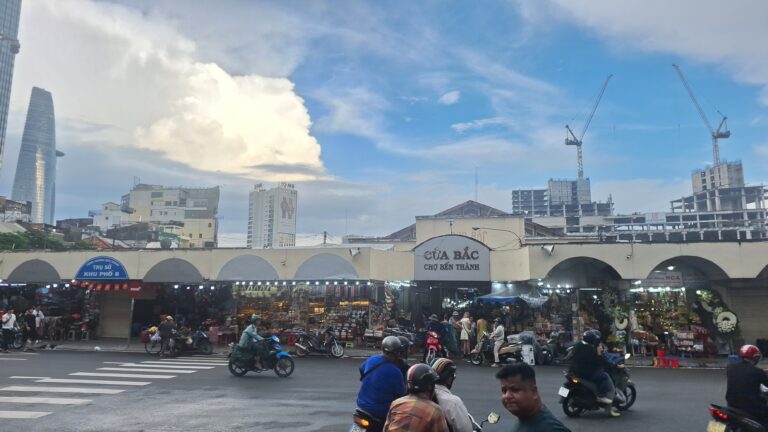
Home > Blog > Motorcycles > Taking to the Road on a Two-Wheeler Motorcycle: What Could Possibly Go Wrong?
Taking to the Road on a Two-Wheeler Motorcycle: What Could Possibly Go Wrong?
Share:
- Published:
- Updated: 20/01/25

Taking to the road or trail on a two-wheeler motorcycle is one of the last significant acts of freedom in our increasingly stifled everyday lives. There are adventures out there for the taking. However, if you think it looks easy and you find yourself asking “what could possibly go wrong?” Then prepare yourself for the answer.
You can find 1,000 articles on the Internet all blathering on about which bike is best for touring. Do you go for a humongous Adv bike that can take the rough with the smooth or a race rep to cover serious ground fast? Maybe even a fully-faired land barge with all the comforts of home.
The answer, however, is simple; the best bike for touring is the one parked right outside your home.
Table of Contents
What Could Possibly Go Wrong on a Two Wheeler Motorcycle?
It doesn’t matter what make, model or cubic capacity of bike you own; you quite literally can transverse the globe on just about anything. Having said this, the degree of comfort and gear you can stow crossing the Arctic on a 90cc Honda Cub is going to be severely limited. If you don’t believe me, ask Ed March. The truth is though, it’s possible.
The more important question when heading for the hills though, is not “on what you can you do it?” But “what can possibly go wrong?” The answer is anything and everything.
Easy As Falling Off A Log
On the surface, it all sounds so easy. Load a two wheeler motorcycle, start the engine, and head off into the wild blue yonder (make that wild green yonder if there’s a lot of jungle). While some people, blessed with unnatural luck would be able to do just this, some lesser mortals including myself, need to prep for the journey.
Prep is good; prep means you’ve planned for potential problems and have a back-up plan in place. However, if you think this alone will keep you safe from gremlins, think again. The following are just some of the dumb things I’ve encountered on the road.
After a late-night showing of old biker movies, some buddies and I decided that the very next weekend we’d all hit the road old school. We took nothing more than a sleeping bag each (that’s a swag bag to you Aussies out there).
Two Wheeler Motorcycle Pillow Fight With Mike Tyson
Being more of a Billy fan than Captain America, I had a nice set of risers with flat bars, so my sleeping bag got lashed to the handlebars. Naturally, I thought it looked incredibly cool. This euphoria didn’t last long though when we hit highway speeds. The buffeting felt like going 10-rounds of a pillow fight with Mike Tyson.
And, also being young and naive enough to believe that form overruled function, I ignored the fact that I couldn’t see my speedo. Although the bag covered half my headlamp, I persevered. Unfortunately, I caught some crosswinds, and the extra bulk on the bars had me weaving all over the road.
The fight continues
Enough was enough and I hit the shoulder to relocate the sleeping bag across the back of the seat. Nowhere near as slick-looking but at least I’d stay in a straight line.
The rest of my buddies saw me pull over and stopped further up the road and have seen me on the move once more, did the same. Just as I accelerated past them with a few ‘told you so glances thrown my way, the newly relocated sleeping bag decided it wanted out.
The bag slipped sideways. Just enough for the tip to flap around before getting dragged into the chain and back sprocket. The speed and weight of the rapidly accelerating wheel pulled the rest of the bag into the chain and locked everything solid.
The result was a 20ft line of rubber left on the road. The filling from the bag flying everywhere, making it look like I’d run over a sheep.
Luckily enough and thanks to some off-road experience, I managed to keep the two wheeler motorcycle upright. What exactly went wrong? First and foremost, I have to put my hands up to operator error. Lashing unwieldy things to handlebars (even if it does look cool) is never a good idea, especially when it impacts on stability.
Two Wheeler Motorcycle Asking For Trouble
Secondly, when attaching anything to a bike, take into consideration how will it be affected by wind. A rider on a two wheeler motorcycle presents a seriously poor aerodynamic shape. So, adding to the problem is just asking for trouble.
Equally important is how you attach the object. The idea is to attach your kit so securely it becomes part of the two wheeler motorcycle and doesn’t move around. Always check that nothing is hanging down and won’t foul controls or rub on anything either abrasive or hot.
On the subject of things hot, the next road trip FUBAR comes courtesy of aftermarket exhaust. And, a set of throw-over panniers. If you’ve ever wondered why original factory luggage systems are expensive, it’s because a lot of thought has gone into their design and manufacture.
Going down the throw-over pannier route is something a lot of us on a budget do. There’s nothing wrong with them. When you’ve reached your destination, being able to dump them while you go scratching, is all bonus. However, it’s really easy even for high mileage veterans to mess up. If two things don’t play well together, it’s hot exhausts and soft luggage.
Rider Induced Mishaps

A friend of mine who has made plenty of long-range trips decided to go the soft luggage route. Having been around the block a few times, he mounts and secures them making sure they cleared the exhaust.
Except he forgot to take into account that he wasn’t sitting on the bike! With his not so inconsiderable weight compressing the suspension, the result was a fist-sized burn hole. By the time he arrived at his destination, the items of clothing in the right pannier were smoldering nicely.
So far we’ve looked at rider-induced mishaps. However, even when everything is as it should be, bike-gremlins can still attack the best of us. I’ve seen Allen screws in handlebar assemblies drop out on the roads of Holland. And, new clutch cables break five minutes after being fitted in Florida. Properly adjusted spokes snapping while trickling through the outskirts of Prague. Don’t even get me started on electrical problems.
Beware The Gremlins
Ok, we all know gremlins don’t exist! However, in the heat of the moment when you’re invariably in the middle of nowhere and something inexplicable breaks, it’s an entirely feasible explanation.
In the cold light of day, the detailed analysis generally reveals the real culprit. In this case, the problem is the wrong routing of the clutch cable. Plus, the failure of the spokes caused by a fitter stripping the threads on a couple of the inside rim nipples. The real key to surviving whatever the road throws at you is all about what you do to adapt and overcome.
When my right side handlebar assembly complete with brake and throttle slid straight off the bar during a slow right turn, leaving me with one screw I was forced to do exactly that. For reasons best known only to the Dutch, the only shop open was an office stationer. With only one screw holding it on. And no way of preventing the assembly from turning on the bar. I bought a small rubber wedge and using a brick, hammered it in place.
Similarly, the broken spokes were fixed by welding a toolkit tire iron between the rim and hub. Not very pretty, but this fix lasted almost 500 miles. As for the clutch cable, a pair of vice grips took care of pulling away from a standstill, and crunchy, clutchless gear changes did the rest.
Plan, Plan, Plan

As mentioned earlier, any road trip benefits from pre-planning, and it’s possible to overcome even local breakdowns with a multi-tool stash under the seat. You can, however, reduce potential problems by thinking things through at the planning stage.
If you’re stowing a lot of luggage, pack it in a logical order. I.e., don’t put waterproofs or a multi-tool at the bottom of your bag. Also, make sure the load is secure to prevent it slipping or moving around. Last but not least, when adding hard or soft luggage for the first time, make sure it isn’t going to make contact with moving or hot parts. This fact is especially important when you are sitting on the two wheeler motorcycle.
Having a rough estimate of how many miles you’re going to do is a good idea to prevent going over a service interval. However, avoid any major engine work without going through a pre-trip shakedown.
Getting Creative on a Two Wheeler Motorcycle
The same goes for new accessories such as handlebars, exhausts or seats. New bars can alter vibration frequency, causing screws on handlebar controls to undo. While new pipes may seem ok, after a few miles, they can throw out your fuel/air mixture.
New seats on the other hand, apart from being massively uncomfortable until they bed in, can also have different contact points with the frame. These can rub through wiring and cause all number of mysterious electrical failures.
Onyabike Adventures Tip: If all of the above sounds a little daunting for your first solo voyage, then maybe consider an organised tour. A tour will allow you to enjoy the adventure with the back-up and problem solving left to the organisers, while you learn the ropes.
A reputable tour company will also invariably provide bikes that are capable of the trip and come complete with tried and tested luggage and rack systems.
Onyabike Adventures answers the question ‘what could possibly go wrong?’ When it comes to a two wheeler motorcycle and touring though, the real answer is all down to preparation and of course, a healthy serving of creative problem-solving.
Recent Posts






